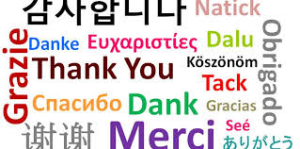 Use these 5 tips to prepare your website for international use. To make your company visible abroad, it is important to have your website translated into multiple languages. However, it is not so easy to prepare your website for a new language.
Use these 5 tips to prepare your website for international use. To make your company visible abroad, it is important to have your website translated into multiple languages. However, it is not so easy to prepare your website for a new language.
Translating the Dutch text to a different language does not guarantee that your website will be clear in the other language. Practical issues, such as letter coding and text space, can cause problems when translating. Additionally, the translated text may not appeal to the target audience because of social and cultural differences.
The correct way to translate a website
An excellent preparation and implementation can ensure that your website is successful abroad and that you are able to attract the customers you are actually targeting. Below, you can find our 5 tips on how to avoid the usual pitfalls long before your website is translated.
- Provide plenty of space for the text. Always ensure there is sufficient space for all the text. Usually, a translation contains 10% more text than the original text. Translations into Asian languages often take up less space because of the characters. Take this into consideration when setting up your interface, layout and navigation. Ensure that cells and text boxes can be expanded to accommodate the amount of text and the layout.
- Always use standard coding and Unicode. If you want to use punctuation marks with special characteristics or ones that do not originate from the Latin alphabet, it is advisable to use internationally accepted codes such as Unicode and UTF-8. Write the text in HTML.
- Think carefully about the best way to arrange the multilingual navigation of your website. This is an important, often forgotten, aspect when designing a successful website abroad. Your target group must be able to find your website, so use ‘geo-targeting’, search engine optimization, the correct user settings and a clear website navigation (such as pull-down menus).

- Distinguish clearly between international, regional and local content. Determine what can be translated for all countries (corporate mission, product specifications etc.) and what content is specific to that particular region or defined market, for example, certain legal information or messages from the media. Ensure the design of the website is adjusted accordingly.
- Display pictures that are recognizable in all languages and are internationally accepted. Pictures must be immediately recognizable, irrespective of the cultural background. Keep it as clear and as simple as possible. And, don’t forget that the text in the pictures also needs to be translated!
 A successful international website will allow your company to grow in new markets. With these 5 tips you will be well on your way to preparing your website for translation. Make sure to list in advance your exact translation requirements. A good start is half the work. It is advisable to make a list of all the items that need to be translated, such as the navigation buttons and any links to other pages or PDF documents.
A successful international website will allow your company to grow in new markets. With these 5 tips you will be well on your way to preparing your website for translation. Make sure to list in advance your exact translation requirements. A good start is half the work. It is advisable to make a list of all the items that need to be translated, such as the navigation buttons and any links to other pages or PDF documents.
Interested in more tips or are you planning on having your website translated? Please contact us or request a quote.
